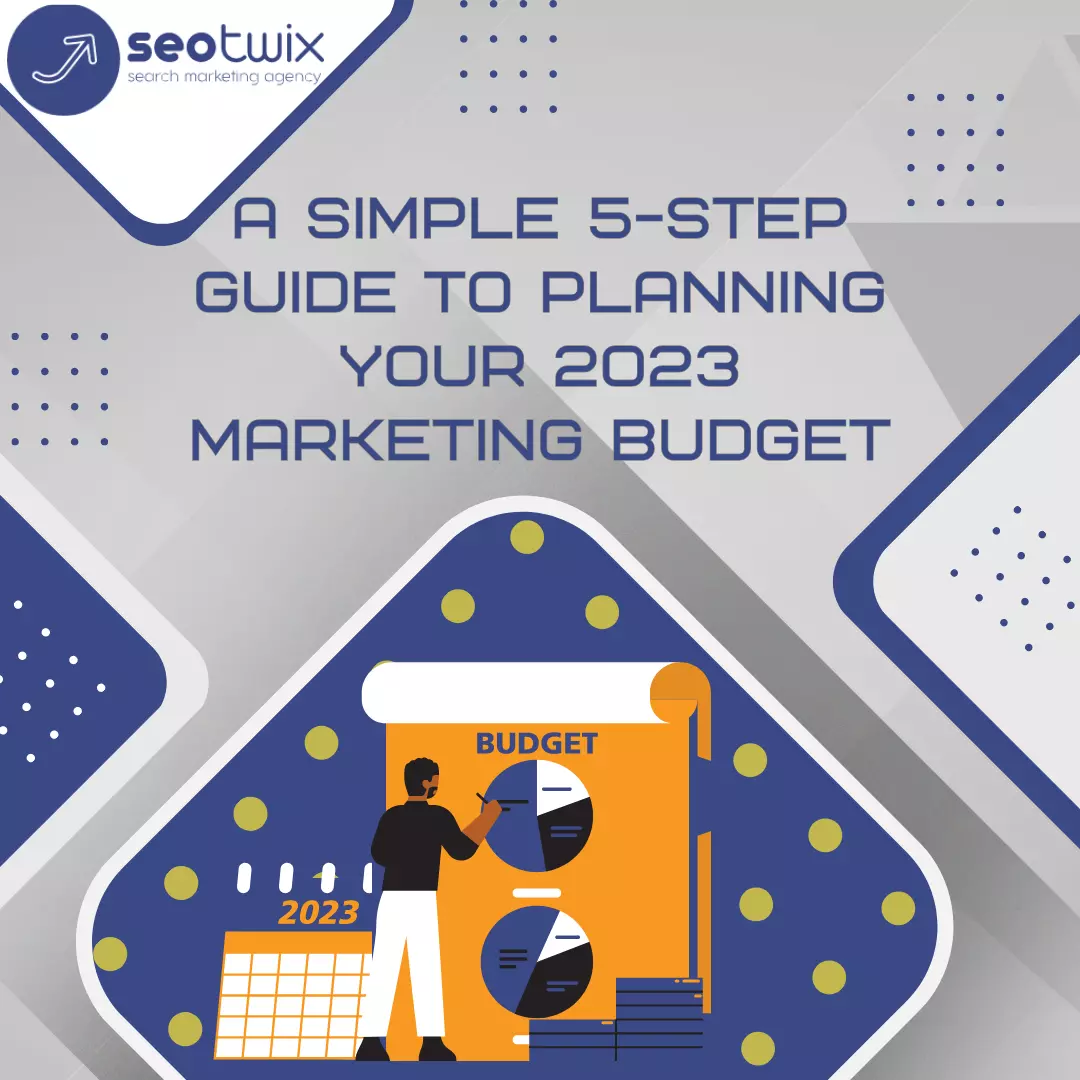Establishing a marketing budget is undoubtedly one of the least enjoyable moments of the year. Between the expectations of hierarchy, the need to justify the money spent, and the new investments… it’s easy to become discouraged. However, it’s not so complicated once you have the right method. We have tested several methods and have gained some experience in the process. Here’s our complete guide to calculating, estimating, and allocating your marketing budget from year to year.
What is a marketing budget and why is it important?
A marketing budget is the estimate of an enterprise’s expenses to promote its products and services or increase brand awareness. The budget is created periodically, either monthly, quarterly, or annually, and it encompasses all costs related to short-term and long-term initiatives.
A marketing budget is highly important for businesses of all sizes, especially small businesses, to avoid future problems. If your campaigns are not properly funded or your marketing expenses do not match your revenue, your business may suffer from a lack of personnel, resources, and insufficient reach.
5 Steps to create a marketing budget in 2023?
Understand the buyer personas
A buyer persona is a representation based on research of your target audience. It’s recommended to have no more than five buyer personas, even though you can create multiple ones. To develop a buyer persona, begin by gathering information about your intended audience:
- Conduct surveys among your existing customers
- Interview people who you believe resemble your ideal customer
- Identify audience demographics using Google Analytics
- Use Facebook Insights to understand user interaction with your brand
The following details should be incorporated into a buyer persona:
- Location
- Age
- Offer
- Income
- Education
- Motivations and goals
- Relationship status
- Problems or challenges they face in life
- What can make their life easier?
Align your budget with your SMART marketing objectives
In marketing, SMART is a goal-setting technique that helps marketing teams create specific, measurable, achievable, realistic, and timely goals. These goals make it easier to determine the most effective action plan and establish the main objective of your company’s marketing practices.
You can apply SMART goals to any marketing campaign by following these steps:
- Specific Applications – Create clear and defined goals for the campaign.
- Measurable – Determine the performance criteria you want to use for your goals.
- Achievable – Use data to evaluate how achievable your goals are.
- Realistic – Evaluate whether your current tactics can enable you to attain your objectives.
- Timely – Decide on a feasible timeline for your goals (long-term or short-term)
Being specific with your short-term and long-term goals is key to creating marketing budgets that generate maximum return on investment. For example, short-term marketing goals may be to reduce price promotions, PPC advertising, etc., while long-term marketing goals may include creating SEO-optimized articles to strengthen brand awareness or building a loyal community of fans.
Remember that marketing doesn’t generate sales overnight. You must continually develop and modify your plan to see positive results and have a clear breakdown of the marketing budget nearby to see your marketing expenses.
Consider the market and competition; SWOT analysis
To better understand your target market, conducting a market study is important. A SWOT analysis (examining strengths, weaknesses, opportunities, and threats) can be useful in analyzing your business and competitors, thereby assisting in the development of an effective marketing strategy or specific campaigns.
Here’s how a SWOT analysis works:
- Strengths – What factors are going well? What gives you an advantage over your competitors in the market? Is the return on investment worth it?
- Weaknesses – What’s not working? What disadvantages did you compare to your competitors? What are the weaknesses of your present resources?
- Opportunities – What external opportunities to your organization can you capitalize on?
- Threats – What external aspects of the organization should you avoid?
Choose the right marketing channels
Don’t forget the first step in creating a marketing budget: identifying buyers. Choosing your target audience will help you choose acquisition channels that will likely generate the best return on investment.
To choose the right channels, ask yourself:
- What channels do your buyer personas frequent the most?
- What are the skills of your team?
- How much money do you want to invest?
You’ll find a list of channels you should use for your marketing initiatives.
Measure return on investment
When you’ve invested a significant portion of your overall revenue in marketing your brand, you’ll want to see if the strategies have helped or hurt your brand before planning future marketing budgets. The best way to do this is to measure the return on investment.
Most of your early marketing budgeting work will be based on forecasts. However, as soon as you launch marketing campaigns and programs, you need to track how it’s helping you progress toward your goals. Based on the results you see, you may want to adjust your marketing tactics and expenses.
It’s important to calculate the sales you could get from your marketing expenses. Many marketing teams want to track results and be data-driven. However, only a few do it well. Before you know it, you’ll get stuck in detailed work and get away from thinking. For example, bagging new prospects isn’t about reaching the target number of prospects because not all prospects are qualified prospects. Some prospects will be cheaper to generate but will never result in a sale. That’s why tracking the performance of your marketing initiatives is important.
If you find that the money spent on a particular channel or campaign resulted in a better return on investment, you can increase the budget for the same channel next year. However, if your money is going nowhere, it’s time to examine your budget.
Our tips for creating a budget for your digital strategy in 2023
Embarking on a new digital strategy also means venturing a little into the unknown when it comes to budgeting. Here are our tips for creating an adaptable budget around different areas of expenditure.
Website – 30%
This is the cornerstone of a successful digital strategy. With a redesign planned, the budget can vary from year to year, but it shouldn’t swallow up all planned expenses! It is entirely possible to redesign without breaking the bank.
If redesigns are not on the horizon, this budget can be dedicated to improvements such as UX and conversions.
Content creation and amplification – 30%
Firstly, it’s important to know that there is no need to have a lot of content to start a digital strategy. In the beginning, there’s no need to spend too much money on frantic content creation: producing one article per week and one downloadable content per quarter is already an excellent pace. The most important thing is to set achievable goals!
In this budget, you can take into account:
- content creation, whether in-house or outsourced;
- the possible cost of optimizing your existing content for search engines (SEO);
- the amplification of this content through social media campaigns, emails, etc.
Lead Generation – 20%
To turn our contacts into prospects and ultimately into customers, we need to nurture them with content to mature their interest in our topics. This way of gradually accompanying our prospects towards the sale (or lead nurturing) can be spread out over the year without costing too much.
The costs to be considered for this step are:
- the production of content for each phase of the marketing funnel;
- the implementation of a marketing automation tool to automatically send content to the right prospect at the right time.
A marketing automation tool can be a great asset for your marketing team and deserves to be considered in the lead generation budget:
- it helps structure the entire marketing strategy and provides guidelines to the team;
- it allows us to build functional elements (landing pages, forms, etc.) for a marketing strategy to generate and nurture prospects automatically;
- it allows us to track all our marketing actions and precisely calculate their ROI (return on investment), enabling us to better adjust our strategies in the future.
Paid campaigns and advertising – 10%
Depending on your sector and strategy, you may want to keep a dedicated budget for paid campaigns. Combining sponsored campaigns with inbound marketing can generate better results. To do this, follow these steps:
- make a list of the paid channels you plan to use (social media campaigns, retargeting, etc.);
- identify the number of leads to be generated per channel and calculate the cost per lead;
- congratulate yourself on having a tightly controlled budget for your paid campaigns.
The “just in case” envelope – 10%
Our best advice: keep a small budget for good or bad surprises: impromptu events, new trends to respond to, etc.
Conclusion
What makes a good marketing budget? It’s very simple: it’s budget that is based on YOUR plans and YOUR goals. Creating a marketing budget can be a challenging task, but businesses of all sizes must allocate their resources effectively. Following the simple 5-step guide to planning your 2023 marketing budget, starting with understanding your buyer personas and identifying your SMART marketing goals, will help you create an effective marketing budget that generates maximum return on investment. Conducting a SWOT analysis and choosing the right marketing channels are also essential steps in creating a successful marketing budget. Lastly, measuring the return on investment is necessary to track progress toward your goals and adjust marketing tactics and expenses. By following these tips, businesses can create a budget for their digital strategy in 2023 that will help them achieve their marketing goals and grow their business.



